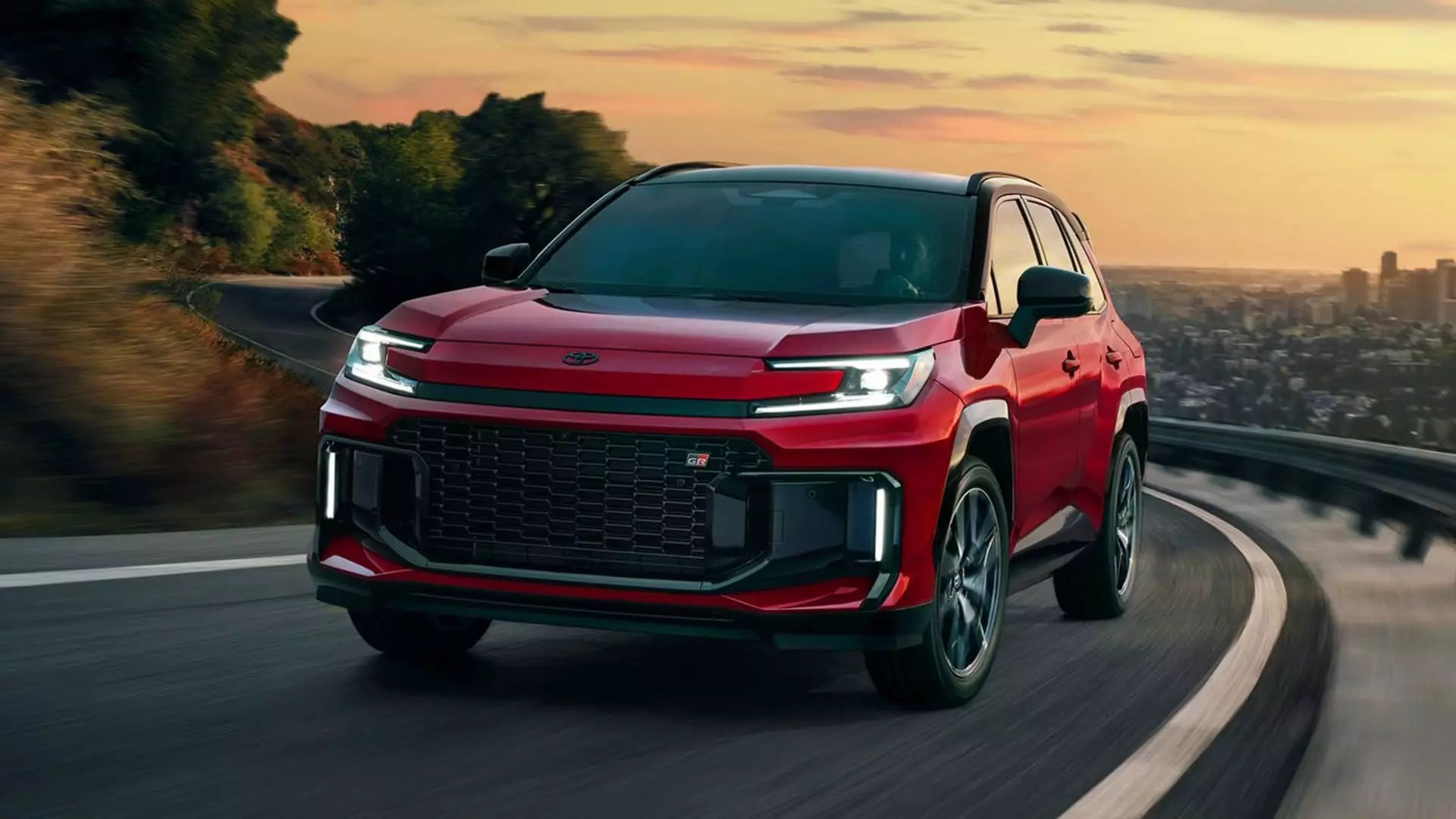Toyota’s recent decision to exclusively offer its extremely popular RAV4 SUV as a hybrid model is nothing short of a significant pivot in the automotive landscape. This move is indicative of a broader trend toward hybrid vehicles, even amid the current buzz surrounding all-electric options. It’s vital to point out, however, that Toyota is not simply following the flock; rather, it is leading the charge against a backdrop of slower electric vehicle (EV) adoption rates. With 2026 marking a new chapter for the RAV4, the implications of this decision will ripple throughout the entire sector, creating both opportunities and obstacles for consumers and competitors alike.
The auto market has been in a swift state of flux, transitioning toward eco-friendliness since the late 1990s, when Toyota introduced the Prius. This is not merely a case of shifting marketing strategies; it’s about compliance with stringent fuel economy regulations and the demand for better performance. Many manufacturers are scrambling to catch up to Toyota, which has effectively positioned itself as an innovator in hybrid technology. The 43.1% of Toyota’s U.S. sales attributable to electrified models speaks volumes—clearly, the hybrid approach is becoming more than a stopgap measure but a long-term business strategy.
Consumer Demand vs. Industry Push
David Christ, head of the Toyota brand in North America, highlighted in his statement that consumer demand is steering the company’s strategic direction. “Consumers and dealers are asking for it,” he emphasized, which raises an intriguing question: Are manufacturers genuinely keeping pace with consumer preferences, or are they trying to shift public sentiment at their own pace? It seems that Toyota’s decision to make the RAV4 hybrid-exclusive is both a response to external pressures and an astute understanding of market dynamics.
As fuel prices fluctuate and environmental concerns gain prominence, consumers are increasingly looking for vehicles that offer efficiency without sacrificing performance. This is where hybrids shine, as they provide the fuel economy of electric vehicles while retaining the familiarity and reliability of internal combustion engines. Toyota’s RAV4 hybrid sales skyrocketed by 29.3% last year, suggesting that the market is ripe for hybrid offerings. However, balancing that demand with an industry push for full electrification presents a nuanced challenge—one that Toyota appears to be ready to tackle.
Hybrid Success Amid Stricter Regulations
The forthcoming RAV4 will effectively represent Toyota’s commitment to evolving with the regulations, which continue to become more stringent. As electric vehicles garner the spotlight, hybrids offer a more immediate, pragmatic solution to consumers wary of the challenges associated with fully electric vehicles, such as range anxiety and charging infrastructure. The current RAV4 starts at a reasonable price point, making it accessible for a wider audience. However, one has to wonder how this pricing strategy will evolve given the trends in tariffs and the rising cost of production that may affect the entire lineup.
The vehicle will retain its robust performance features with a 2.5-liter four-cylinder engine bolstered by hybrid technologies. But can it genuinely compete against fully electric vehicles? Time will tell, but consumers appear willing to favor hybrids for now, a trend that may continue until charging infrastructures become more robust or all-electric vehicles become significantly more mainstream.
Production Challenges and Political Context
The political landscape cannot be overlooked when considering the ramifications of Toyota’s hybrid-only RAV4. The ongoing tariffs under the Trump administration complicate manufacturing strategies and potentially inflate vehicle prices for American consumers. Toyota produces some RAV4 models in the U.S. but relies heavily on imports from Canada and Japan. Mark Templin, COO of Toyota Motor North America, hinted at potential increases in domestic production to mitigate these tariffs, but challenges remain.
The uncertainty surrounding trade policies introduces an element of volatility into the sales equation. It raises critical questions about how consumers will react to fluctuating prices and availability. The company must adapt its production strategies, not just to optimize hybrid vehicle manufacturing but also to navigate external political and economic factors—which is no easy feat for even the most established brands.
The Race for Market Dominance
Despite the hurdles, Toyota’s RAV4 remains a strong competitor in an increasingly crowded market. Last year’s 9.3% increase in RAV4 sales to nearly 475,200 vehicles highlights its continuing allure. Nevertheless, the competition is heating up—especially with many manufacturers pursuing electrification more aggressively. As the RAV4 moves to a hybrid-only model, it must contend with not only traditional competitors but also emerging technological challengers in the marketplace.
As much as this shift evokes optimism, it should be approached with caution. A successful transition will depend heavily on consumer reactions, production adjustments, and external political developments. If Toyota can navigate these waters effectively, it may not only solidify its foothold in the market but also redefine the standards that competitors must meet. The road ahead might not be smooth, but for Toyota, the hybrid RAV4 could be a game-changer, attaining both sales prominence and satisfying consumer expectations for years to come.


Leave a Reply